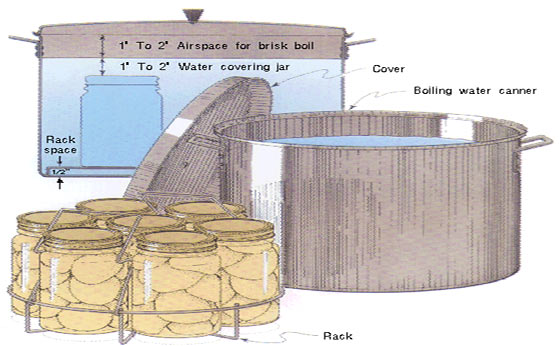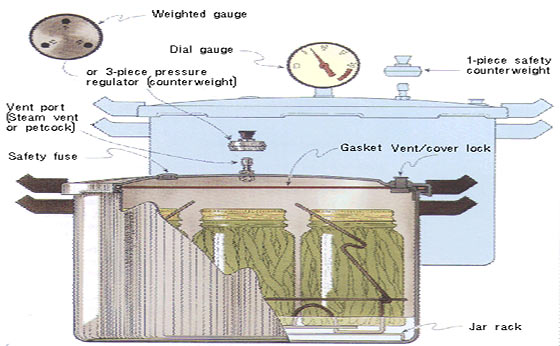5 Methods of Home Food Preservation
The following five methods of home food preservation will enable you to not only be frugal (obtaining and preserving bulk foods on sale) but will help you build a food storage inventory (along with your dry goods and other foods).
CANNING
‘Canning’ is a process in which foods are placed in jars or cans and heated to a temperature that destroys microorganisms and inactivates enzymes.
The heating (and subsequent cool-down) forms a vacuum seal against the lid which prevents other microorganisms from contaminating the food within the jar or can.
Most popular pressure canner:
Presto 23-Quart Pressure Canner
Acid foods such as fruits and tomatoes can be processed or “canned” in boiling water at 212°F (also called the “water bath method”).
Low acid vegetables and meats should be processed in a pressure canner at 240°F (10 pounds pressure at sea level).
ALWAYS follow well-known trusted canning recipes and rules.
Related article:
All American Pressure Canner That Will Last Forever…
FREEZING / FREEZER
Freezing reduces the temperature of the food so that microorganisms cannot grow. Enzyme activity is slowed down (but not completely stopped) during freezing.
Even though food will freeze at a temperature of 32°F, you really should keep your freezer set to 0°F or less. The reason is that low temperature microbes will still develop below 32°F, but are very much stalled at 0°F or below – affecting freezer food storage times.
DRYING / DEHYDRATING
Drying or dehydrating removes most of the moisture from foods. Thus microorganisms cannot grow and enzyme action is slowed down.
Dried foods should be stored in airtight containers (or vacuum-sealed) to prevent moisture from re-hydrating the food and allowing microbial growth.
Dehydrated food has been heated at low temperatures. Since there is no high temperature ‘cooking’ or other process such as boiling, etc., dehydrated food preserves much of the food’s nutrients. Shelf life will depend on the level of dryness.
Related article:
Dehydrated Food versus Freeze Dried Food
PICKLING
Pickling is another form of canning. Pickled products have an increased acidity that makes it difficult for most bacteria to grow. The amount of acid present is very important to the safety of the product.
Pickled products are also heated in jars at boiling temperatures to destroy any other microorganisms present and form a vacuum in the jar.
DIY Pickling: Step-By-Step Recipes
JAMS AND JELLIES
These foods have a very high sugar content. The sugar binds with the liquid present, making it difficult for microorganisms to grow.
To prevent surface contamination after the product is made and thus possible yeast or mold growth, these are either canned, frozen, or refrigerated.
The Joy of Jams, Jellies, and Other Sweet Preserves
There are a wealth of resources available to learn how to properly utilize any of these food preservation techniques, including the internet, books, and experienced users.
If you haven’t already, go ahead and challenge yourself and try any of these methods so that you can store extra food while taking advantage of garden harvests or store sales. Not only will you enjoy these foods off-season, but you will become a better prepared person or family.
Ball Complete Book of Home Preserving
Image Source: “So Easy To Preserve”, Cooperative Extension Service, The University of Georgia


